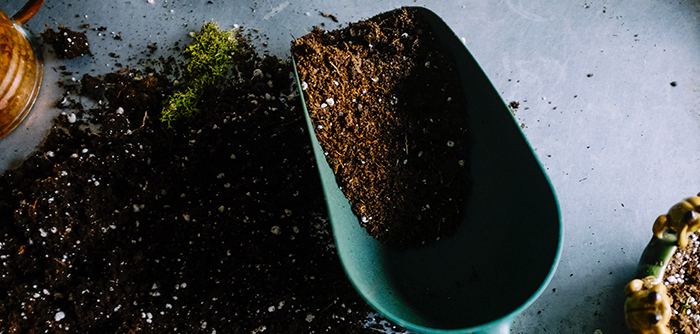What is the Best Soil for Fruit Trees?
If you like the idea of having fresh fruit on tap, then you should know that our spring pot range offers a great environment for fruit trees to grow in. Cherries, peaches, figs, apples, tangerines, lemons, and limes are some of the easiest fruit trees to cultivate in pots. Just expect them to yield a little less fruit than full-grown trees.
Even so, you can’t just plop a tree into a pot and expect it to grow. Fruit trees must be taken care of appropriately and if there’s one thing you really need to get right, it’s the soil you use. So, what is the best soil for fruit trees?

The perfect soil yields the tastiest fruit
The perfect soil is a delicate balance of texture, depth, acidity, and content, but it’s not an unachievable one. In general, fruit trees thrive best in well-drained soil with a sandy, loamy texture. If there’s too much clay, or too many rocks, it can be difficult for a fruit tree to flourish. Soils that are lacking in nutrients also make it challenging for fruit trees to produce tasty, juicy fruit.
While the option exists to buy readymade potting soil for your fruit trees, it’s always best to have complete control over the soil mixture you use. So, what is the best soil for plants? Equal proportions of sand, peat, and bark usually render a pretty good fruit tree soil mix.
What’s important is that the soil you end up with is capable of retaining plenty of moisture and draining away excess water without difficulty at the same time. This is one of the reasons why our spring pot range works so well for fruit trees. Water is able to find its way out through the fabric and away from the roots. For peace of mind, don’t forget that a layer of gravel in the bottom of the pot will also help to secure water drainage.

pH levels and fertilizer
On top of the content and texture of your soil, you should also check its pH levels. Testing for pH levels in soil may seem fairly technical, but there’s really nothing to it. There are a number of basic pH-level checking kits out there that can be used to carry out home-testing. If your soil happens to be fairly acidic, you’ll need to raise its pH levels to find a balance that’s much more in line with the optimum environment for fruit trees. Lime juice can help to balance the pH levels of an overly acidic soil.
Fruit trees also need lots of fertilizer, all year long. It helps them to yield more fruit. In fact, it’s a good idea to add fertilizer to your fruit tree container on a monthly basis, unless you opt for a slow-release fertilizer. In this instance, you’ll only need to add new fertilizer every three months or so.

Planting with care
But even if you’ve managed to find the perfect soil mix, you’ll still need to plant your fruit tree with care and knowhow in order to reap the best possible results. When it comes to planting fruit trees, there are two main areas to consider: container size and positioning.
To give your fruit tree the room that it needs to grow, opt for a 10 to 15-gallon container. It’s big enough to give the tree the support that it needs, but it’s not so big that it’s difficult to move around. If there’s one thing that most people want from a container plant, it’s to be able to move it from one place to another without too much effort. You’ll be able to bring the tree inside when the weather gets too cold, or shift it into the shade when it’s hot.
On a final note, when planting your fruit tree, be sure to position it right. You’ll need a layer of gravel at the bottom to encourage drainage and a layer of soil for the tree’s roots to rest on. Remember to make sure it’s in the center of the pot and then you’re good to go.










